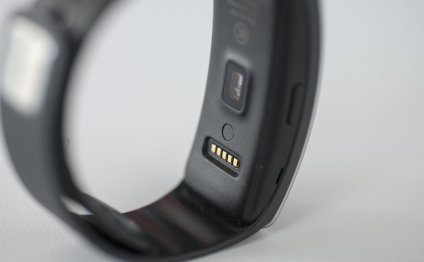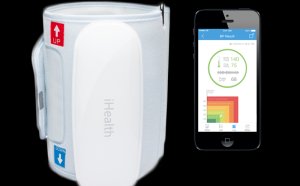
Calibrated Blood pressure Monitor
The ability to continuously monitor a patient's blood pressure long-term (for hours, days, or weeks) using a wearable device as unobtrusive as a wristwatch or piece of jewelry, could revolutionize the study, diagnosis, and treatment of hypertension, heart failure, and other cardiovascular disorders. Today's familiar blood pressure cuffs are used to diagnose and manage the hypertensive disorders which afflict 65 million Americans. But these existing devices only permit single 'snap-shot' measurements, while true arterial blood pressure fluctuates minute-by-minute, from night-to-day, etc. There is ample evidence that more intense blood pressure monitoring offers better clinical information. Moreover, the existing blood pressure devices are a chore: they are obtrusive, finicky, and uncomfortable. This thesis presents the design and development of a novel non-invasive BP monitor. The device provides beat-by-beat mean arterial blood pressure (MAP) estimates using adaptive calibration of the measured transit time of a propagating arterial pressure wave. The device employs unique wearable sensor architecture to estimate peripheral pulse transit time measurements. This architecture is comprised of two in-line photoplethysmograph sensors one in the form of a wristwatch measuring the volumetric pulsation in the ulnar artery and one in the form of a ring measuring the volumetric pulsation of the digital artery at the base of the little finger. Use of this architecture eliminates problems associated with the traditional method of estimating pulse transit time using the electrocardiogram (EKG).(cont.) Additionally, by co-locating the two sensors on the same appendage not only are we able to account for the effect of hydrostatic pressure variation in our pulse transit time (PTT) measurements using an imbedded height sensor, but by actively altering the height of the two sensors relative to the heart we can achieve real-time identification of the calibration equation mapping PTT to MAP. Such real-time calibration of PTT measurements obviates the need for obtrusive cuff-based blood pressure monitors and offers the potential to recursively update the calibration equation as the patient's cardiovascular state evolves throughout the duration of the measurement period. Adaptive PTT calibration through natural patient motion has never previously been explored and offers the potential to achieve the longstanding goal of a truly imperceptible, wearable home BP monitor. This thesis describes the design and development of the sensor hardware used in the wearable device. Based on both theoretical study and experimental observations a device model has been developed to allow estimation of mean arterial blood pressure using the pulse transit times measured with our sensors. Additionally, this thesis presents the adaptive calibration methodology and the novel system identification algorithms that were used to parameterize our device model using natural human motion. Finally, this thesis demonstrates the potential of these innovative concepts through human subject testing and data analysis.
RELATED VIDEO



Share this Post
Related posts
Omron Upper Arm Blood pressure Monitor
Offering precision and comfort with our Easy-Wrap ComFit Cuff that fits standard and large Arms, the 7 Series Upper Arm Blood…
Read MoreMobile phone Blood pressure Monitor
About 70 years ago, Franklin Roosevelt died of essentially untreated hypertension, with years of exams describing a progression…
Read More











